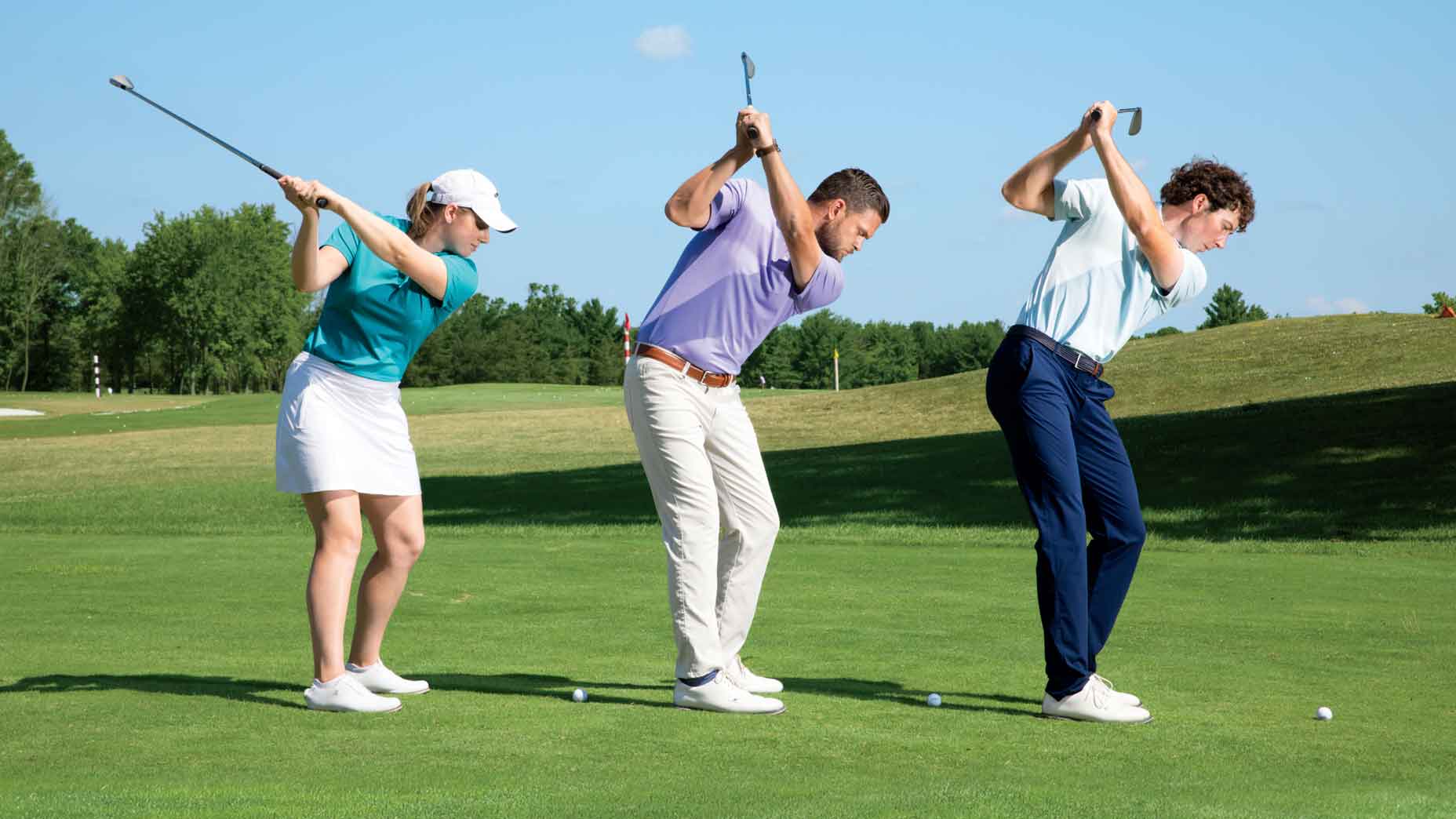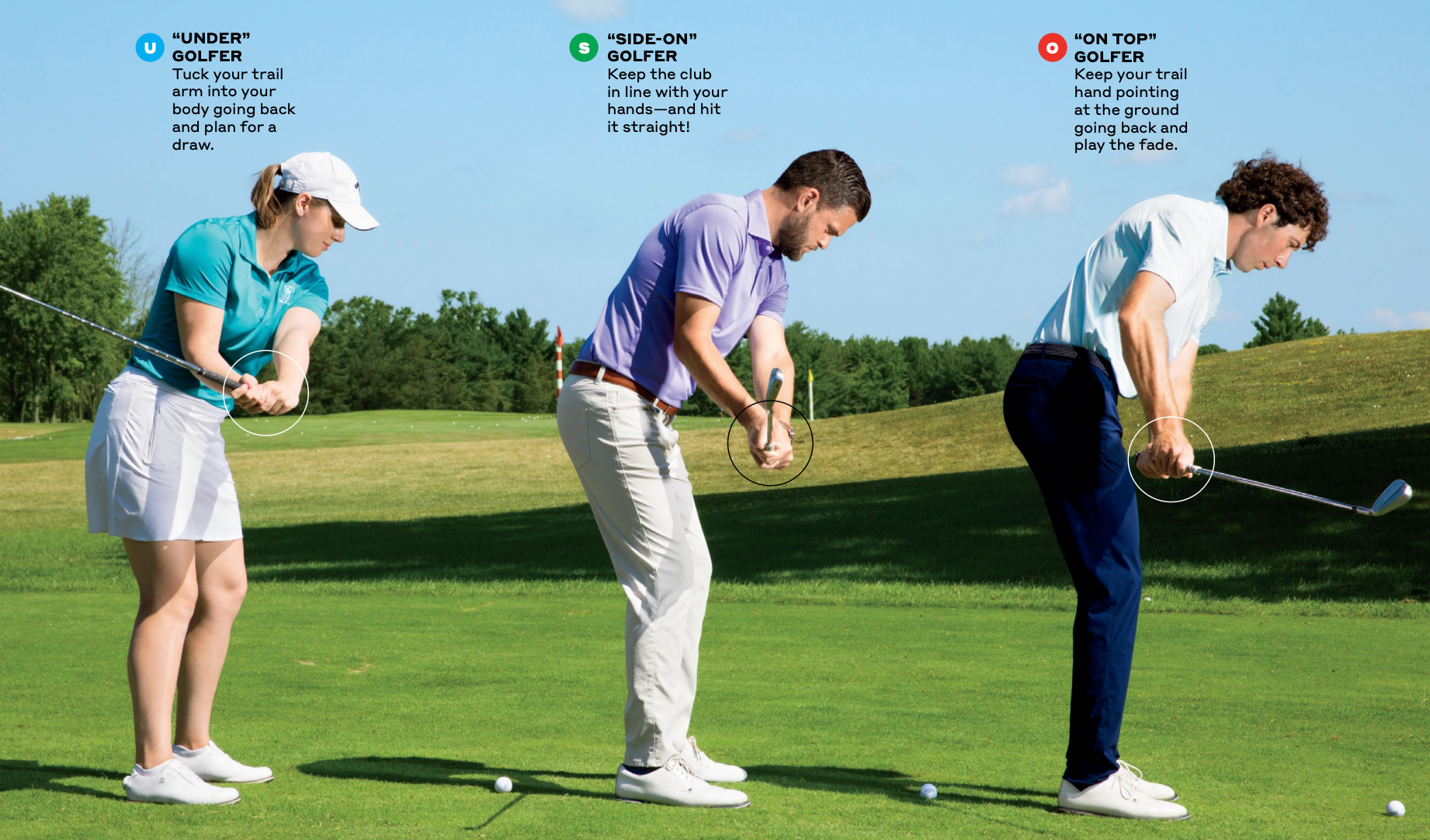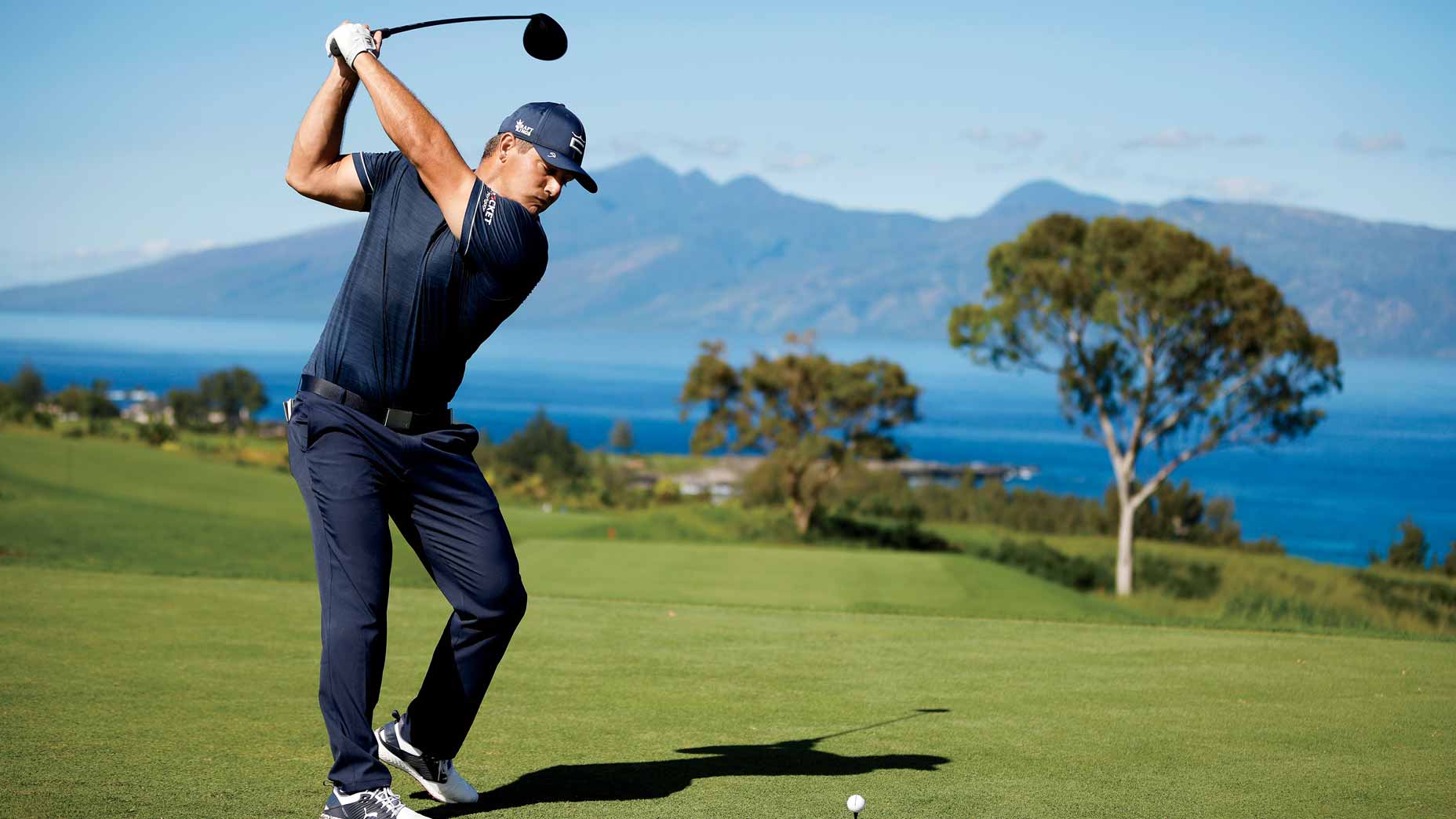
Which of these three backswings works best for your game?
Jasmine Hsu
There’s no such thing as a good swing or a bad swing. It’s all about finding the best one for you.
It starts with your grip — the only connection you have with the club. To better understand how your grip affects your motion, our research with renowned golf biomechanists Dr. Phil Cheetham and Dr. Sasho MacKenzie analyzed the grip and its effects on the swing using a database of 100 PGA Tour players and an advanced motion-capture system.
Our work uncovered some fascinating results, including that it’s primarily the way you hold the grip in your trail hand (the right hand for right-handed golfers, left hand for lefties) that has the biggest effect on the success of your swing.
Fact: There’s no perfect way to grip a golf club. Great players from every era have gripped the club in different ways. It’s all about finding the right grip for you based on how your trail arm naturally works.
The first thing you need to do to nail your perfect hold is to test the mobility in your trail shoulder. We call it “taking the oath for better ball striking.”

Jasmine Hsu
Hold your trail arm up, like you see three of our students demonstrating above, and flex your wrist to get the back of your trail hand pointing toward the ground as much as you can. The results of the oath test immediately tell you how to grip the club in your trail hand.
As a general rule, the farther you can reach behind you with your trail arm (golfer far left), the easier it will be to shallow the club. The club will tend to move more around you. Though not always, these players often prefer grips where their trail hand is “under” the handle (rotated more to the right for a right-handed golfer). Picture Jon Rahm or Xander Schauffele.
If you can simply get your trail arm and hand perpendicular to the ground (middle), grip the club “side-on,” like Billy Horschel or Justin Rose.
If your arm points more toward the ground in front of you (right), no sweat — grip the club with your trail hand more “on top” of the handle, a hold used by Rory McIlroy and Sergio García.
Your trail-hand grip has the biggest effect on club delivery and ball flight through its effect on your upper body. It also controls how you hinge the club on the takeaway and overall swing direction.

Jasmine Hsu
“Under” golfers, like our student on the left, will swing their best when they fold their trail arm into their body on the backswing. Imagine “tucking” your elbow into your side. (As a result, the club will move more in-to-out, and your natural shot shape will be a draw.)
“Side-on” golfers will have a neutral swing direction and will tend to hit the ball straight.
“On top” golfers, like you see on the right, will tend to swing more out-to-in, more prone to a fade.
Some of these positions may look different from what you’re used to — a takeaway that’s “too inside” or “over-the-top” means nothing. Terms don’t matter. The path to your best golf is finding the swing that fits you, i.e., a swing that allows you to release the club fully. Once you personalize your grip, great things will happen. If you don’t, mismatches will rule the day.
Mike Adams is a GOLF Hall of Fame Teacher and is the director of instruction at Fiddler’s Elbow CC, Bedminster, N.J., and the Medalist Club, Hobe Sound, Fla. Terry Rowles is a GOLF Top 100 Teacher and is the director of instruction at Hudson National GC, Croton-on-Hudson, N.Y.









